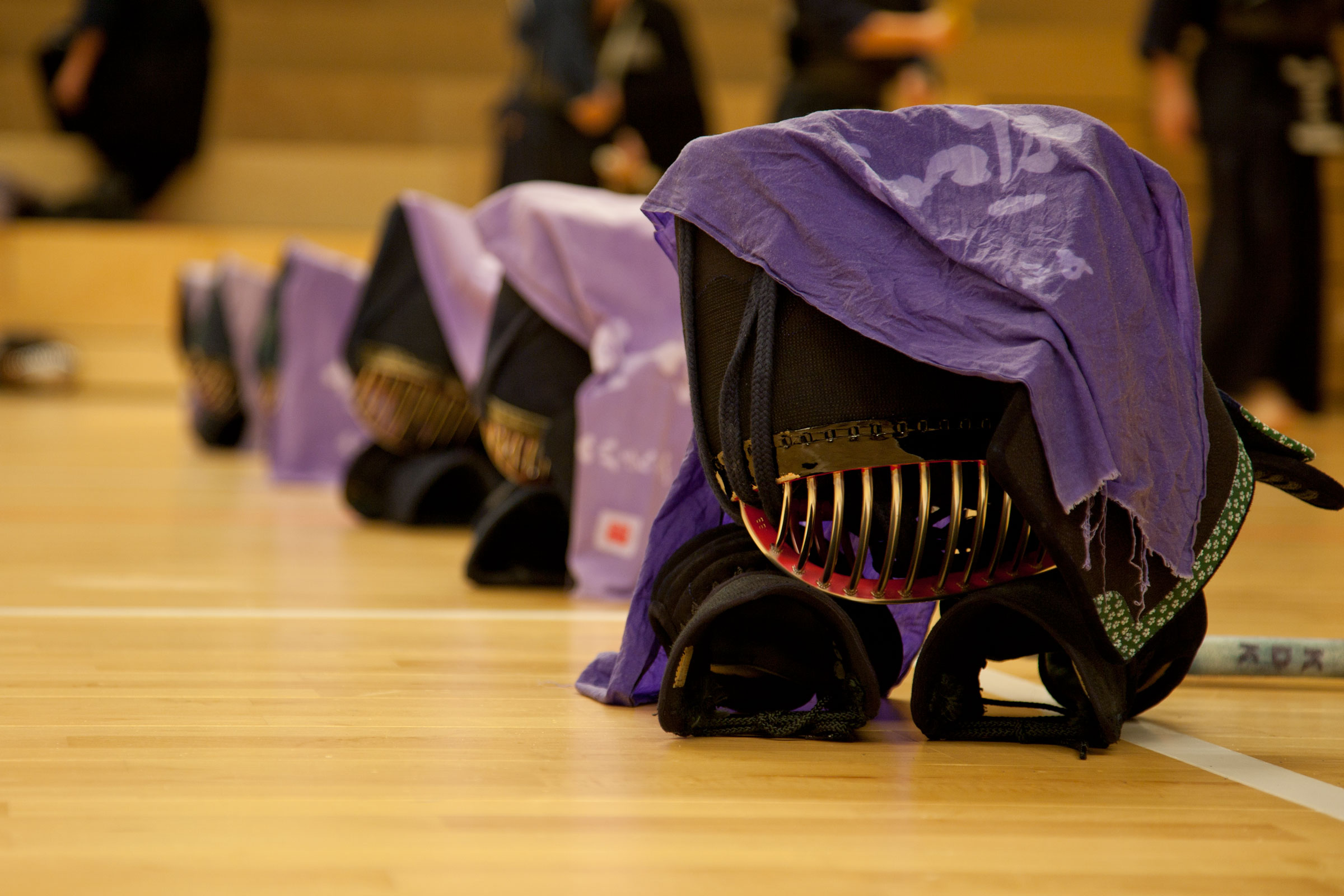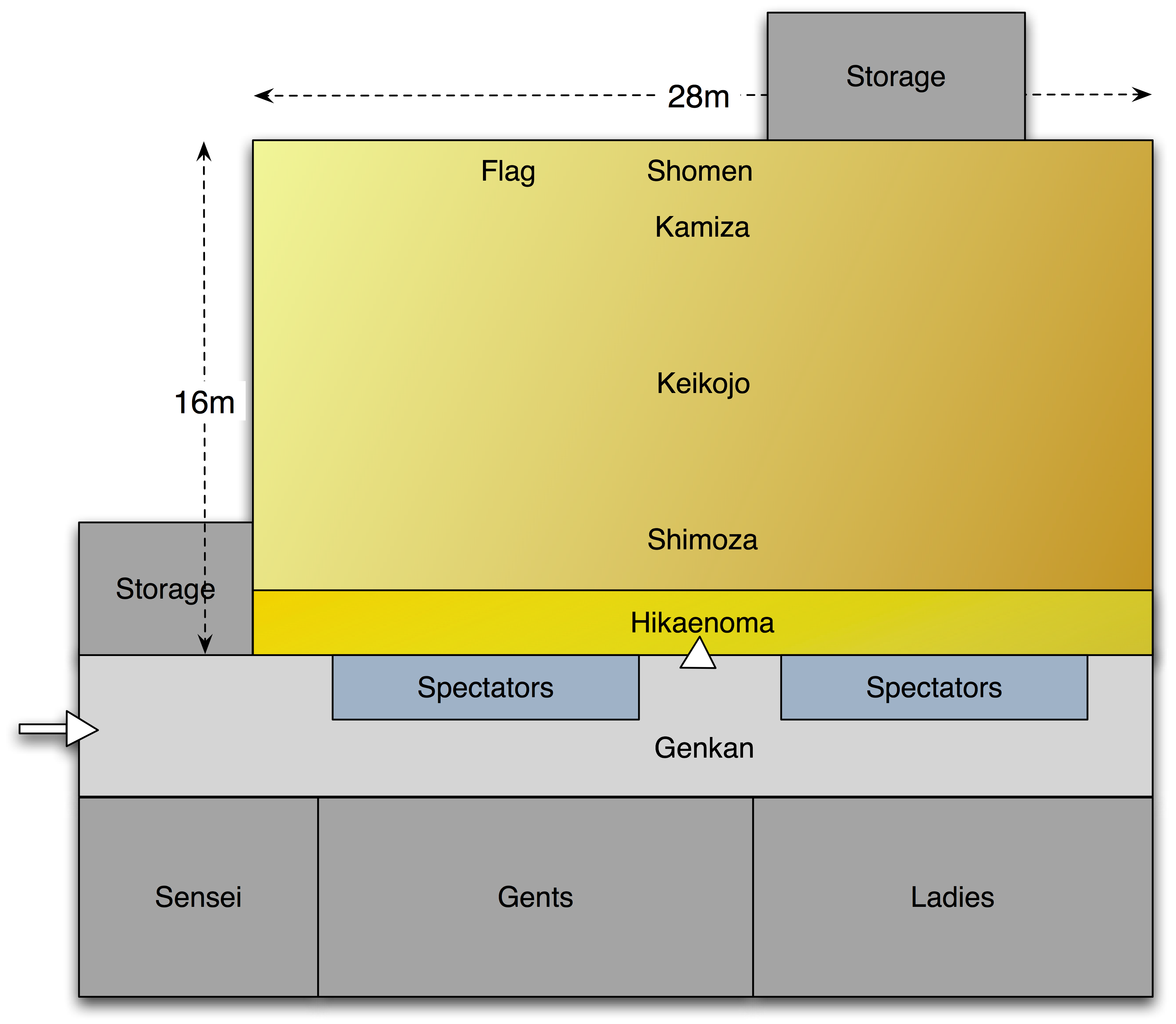Path to excellenceDe weg naar kwaliteit
I would like to thank Curtis of Kendo USA for allowing us to quote his article (original).
================================
In kendo there is an old maxim that states 1,000 practices to temper and 10,000 practices to polish. Research has shown that to become an expert requires 10,000 hours of practice. So let’s look at the numbers to get there.
In general we practice 45 weeks per year. So if by some miracle you attend all these practices we have a baseline to go by.
In order to temper our kendo (we will forego the “expert” 7-dan/8-dan calculations):
| Times per week | # of practices per year |
1,000 practices |
| 1 | 45 | 22.2 years |
| 1.5 | 67.5 | 14.8 years |
| 2 | 90 | 11.1 years |
| 2.5 | 112.5 | 8.9 years |
| 3 | 135 | 7.4 years |
| 4 | 180 | 5.6 years |
| 5 | 225 | 4.4 years |
| 6 | 270 | 3.7 years |
================================
Whether the “10.000 hours rule“ is true or not, it does provide at least an interesting take on what it takes to master something. Curtis’ quick calculations show something that most of us already know: if you want to become anywhere near decent at kendo, you will need lots of practice! Our dojo holds three classes each week, but many of our members only visit one of those. This would suggest that you would need at least twenty-two years to gain any basic proficiency!
At the beginning of this season, Bert Heeren-sensei wrote a letter to all students. In this letter he calls upon all students to take kendo seriously, as budō instead of a sport or hobby. If you want to make any noticeable progress you will need at least two classes each week, preferably three. And the great thing is: your membership contribution has already paid for three sessions each week! All you have to do is show up and to give it your best! And don’t discount those suburi which can be done at home.
So! Almere, take a dare and get ready for some heavy training in Amstelveen on tuesday or saturday! And Amstelveen, won’t you make the trek to Almere for extra kata training and to meet some fresh faces?Met dan aan Curtis van Kendo USA voor de toestemming om zijn werk te citeren (origineel).
================================
In kendo is er een gezegde dat stelt dat 1000 trainingen je kendo sterken en dat 10.000 trainingen haar polijsten. Onderzoek heeft aangetoond dat je 10.000 uur moet investeren in oefening om expert te worden. Dus, laten we wat rekenwerk doen.
Over het algemeen trainen we 45 weken per jaar. Lukt het je dus op magische wijze om alle trainingen bij te wonen, dan komen we bij de volgende tabellen.
Eerst, om onze kendo te sterken (we laten de “expert” 7-dan/8-dan berekening even zitten):
| Training per week |
# training per jaar |
1,000 trainingen |
| 1 | 45 | 22.2 jaar |
| 1.5 | 67.5 | 14.8 jaar |
| 2 | 90 | 11.1 jaar |
| 2.5 | 112.5 | 8.9 jaar |
| 3 | 135 | 7.4 jaar |
| 4 | 180 | 5.6 jaar |
| 5 | 225 | 4.4 jaar |
| 6 | 270 | 3.7 jaar |
================================
Of de “10.000 uren regel“ nu waar is of niet, het is in elk geval een interessante theorie over wat er nodig is om ergens erg goed in te worden. Curtis’ rekensommen tonen ons iets dat we al weten: wil je ook meer een beetje goed worden in kendo, dan moet je heel veel trainen! Onze dojo organiseert drie lessen per week, maar veel van onze leden bezoeken daar maar één van. Dit suggereert dat je minstens tweeëntwintig jaar bezig bent om ook maar enig niveau te bereiken!
Aan het begin van het seizoen schreef Bert Heeren-sensei een brief aan zijn leerlingen. In deze brief roept hij iedereen op om kendo serieus te nemen, als een budō en niet als hobby of sport. Als je aantoonbare resultaten wilt bereiken moet je minstens twee keer per week training, het liefste drie keer. En het mooie is: jouw lidmaatschapsgeld betaalt voor drie lessen in de week! Het enige dat je hoeft te doen is op te dagen en je beste inzet te tonen! En vergeet de suburi niet die je thuis kan doen.
Dus! Almere, trek de stoute schoenen aan en kom op dinsdag en/of zaterdag keihard knallen in Amstelveen! En Amstelveen, reis op de zaterdagochtend eens af naar Almere voor extra kata oefeningen en voor nieuwe gezichten!


